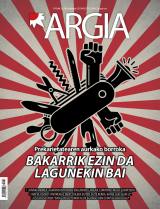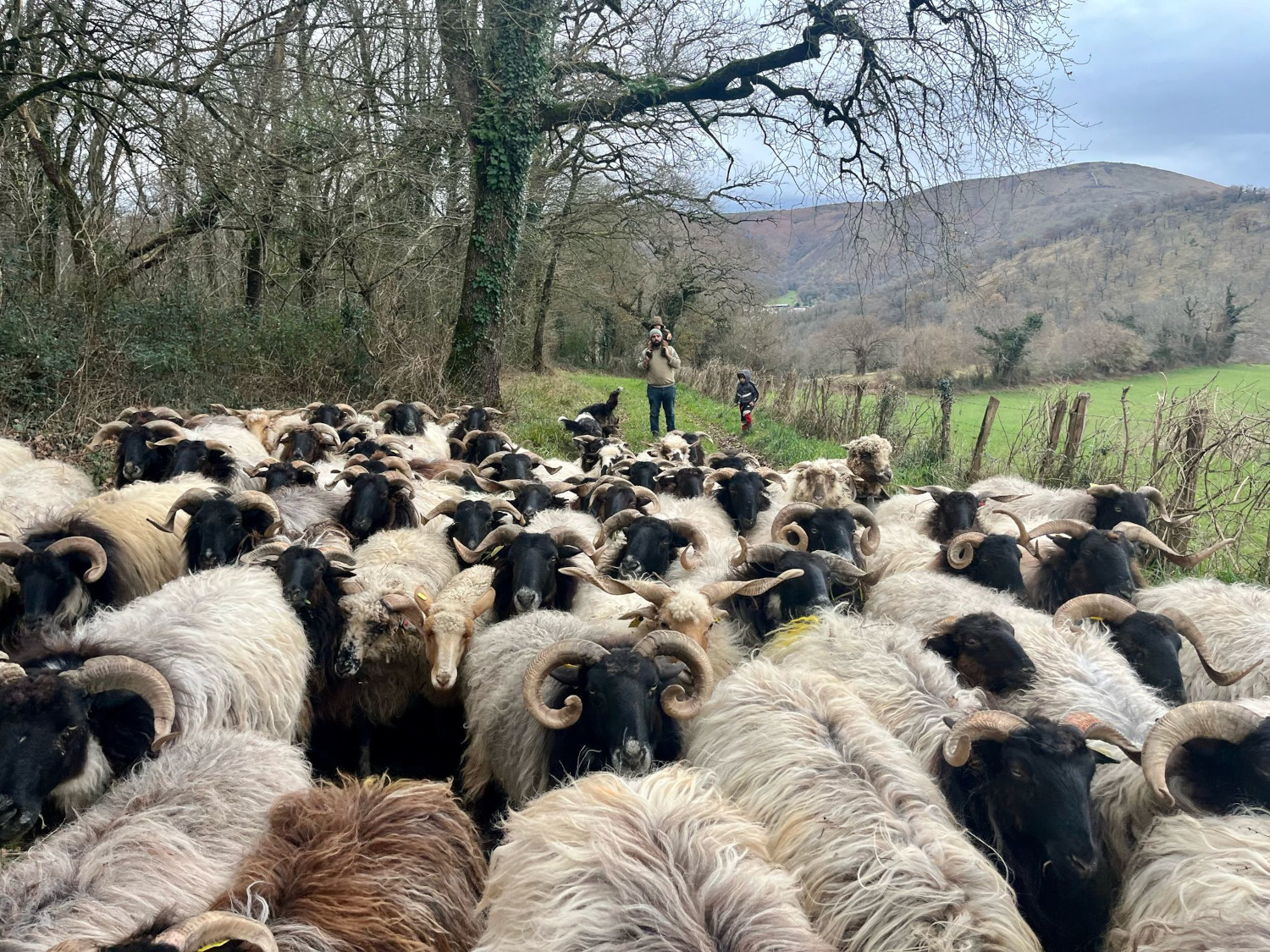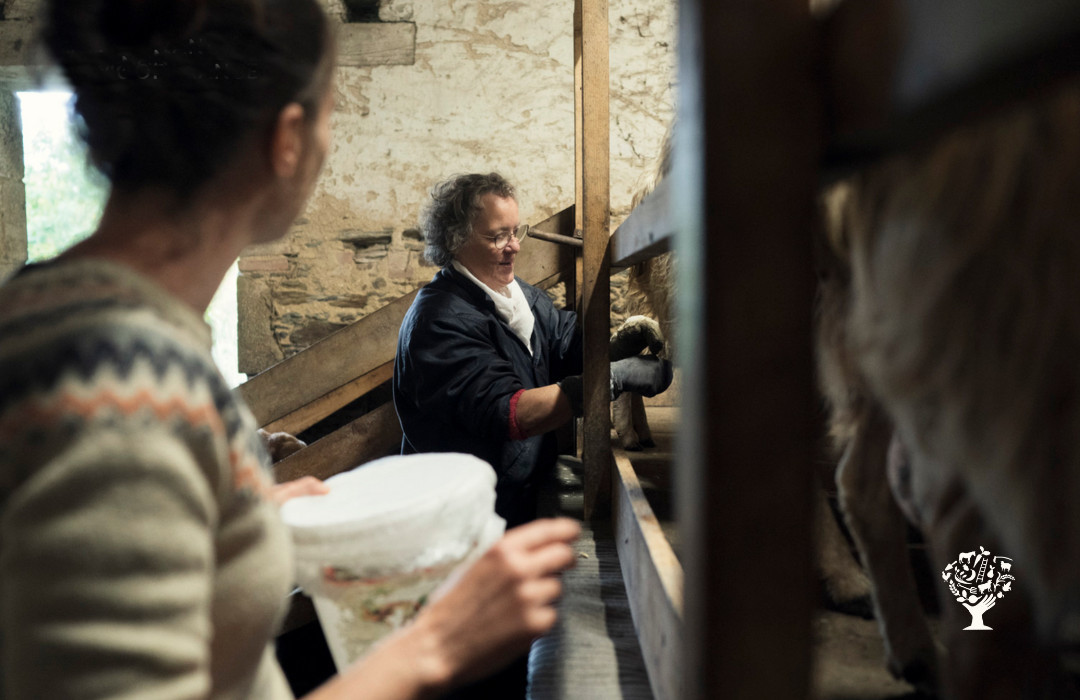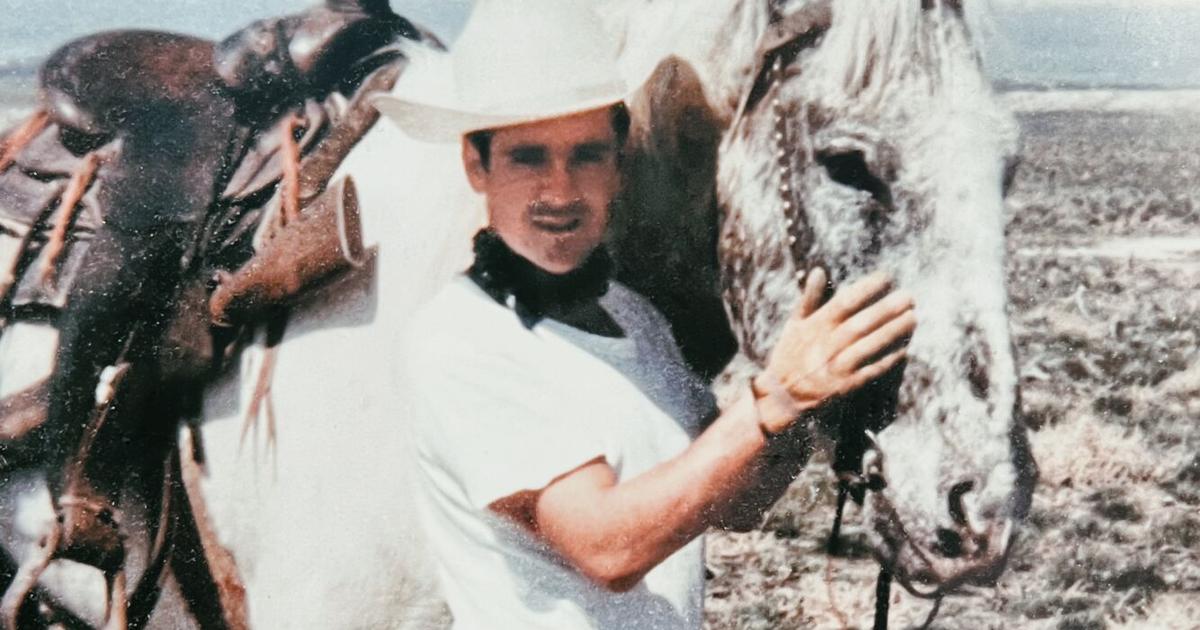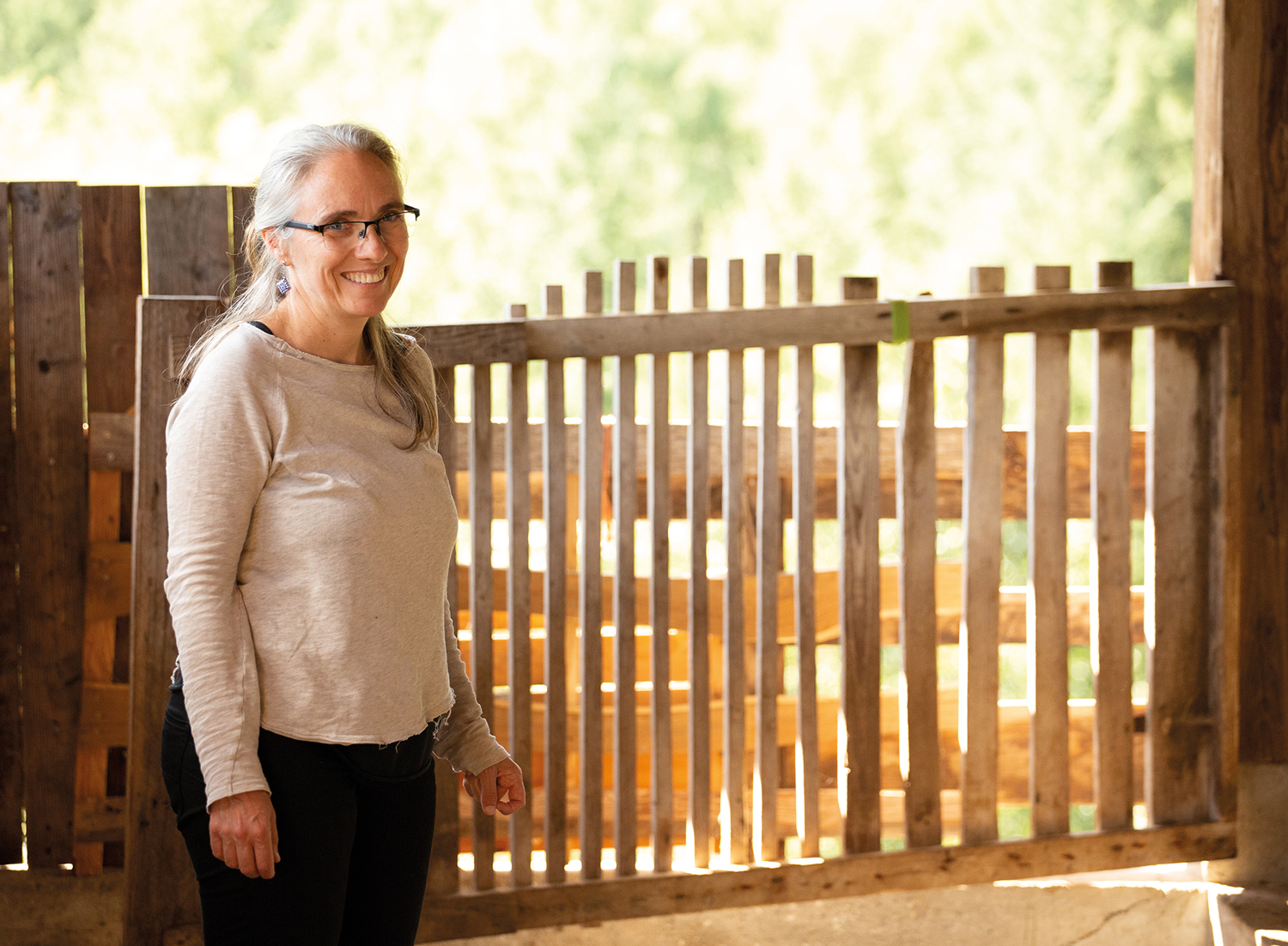Thin ear cencerro to good sound
- “People like shoes, every joare needs their size, their sound,” the Apezetxea told us. In fact, the horseback riding has to be able to boot, take the hammer and give precise hits: where and how to hit it. These blows shape motion and shape sound.

The interpreter's job is to know what sound corresponds to the one in his hands. And the ear will decide whether what the hands do is right or not; he himself will lead the hands to do the hill well; for the hill is made with the ear. What began my grandfather in the house of the Priests is now carried by my grandson. They love their trade, and how! Pastors can therefore be reassured. The Joarés of Goizueta would lose their ears, but they would do the censuses with their hearts.
Grandfather Bixente Apezetxea (Leitza, Caserío Ibero, 1882) was the first to dedicate himself to the family. While working at the power station, they were taken to a Joare who had spent a "gun", and because he was the mechanical manager of the power station, he told Bixente that he would fix it himself. “And he made him a new caron, but the cage lost his sound! Where is the sound?’ Bixente asked the manager,” said Joxe Antonio Apezetxea (Goizueta, 1928), son of Bixente. Bixente was a pastor and knew what noise had brought him to the way. “The orders were fixed, but my father put the sound back on the jewel. That’s how he started working as a joarero!”
At the time of his grandfather Bixente, there were over 200 sheep dedicated to agriculture. And there, in the area of Goizueta, the joare was sold. “Then the sheep and the shepherds were exhausted, and the car was not sold out of the house, and they left it. So we started my brother and I,” says Joxe Antonio. “My father told us that the work was hard, but on one occasion when he was not at home, my brother and I made a Joare. We had the sound taken in our ears! My father was surprised, and so we started in 1947, following his advice. He left the other brothers, but then John, his younger brother, began, and now it is his son who makes the ashes in Lekunberri.”
Joxe Antonio, his father, habitually participates in the workshop of his son Jexux Mari (Goizueta, 1964). Jexux Mari is now the head of the marches, and it is he who bears responsibility.
Because what matters is sound.
Jose Mari Apezetxea: “It’s not the same a 0.8 millimeter veneer as a 1. People don’t understand that two millimeters are enough to change the sound to the cage.”
Joxe Antonio remembers the beginnings: “I couldn’t find the brass to do the censuses, and in the end I found it in Bilbao.” To make the cut you need a custom veneer. His son Jexux Mari explains: “The Joarea hasn’t caught, it hasn’t been done. How long, how wide and what thick veneer… you have to see many things. It looks like stupidity, but it's not the same a 0.8 millimeter sheet as a 1 millimeter sheet. People don’t understand that two millimeters are enough to change the sound to the cage.”
Joxe Antonio and Jexux Mari are strict with sound. “There are people who don’t know where to get the joare. For them, the sound is equal. But if he is a pastor he will notice, and we have to put the sound he needs to the ash,” says Joxe Antonio. “And the sound has to be understood, because every joare has its secret.”
Joare the Secret of Sound
The pastor puts the cencerro on the cattle to know where it is. And the pastor knows what he normally wants. “There are people who want a cencerro of fine sound, the kind of small bell, that makes dinnn. Others, on the contrary, do it well, because you hear better away. We also call slow others, which are censuses that have run out of sound.”
Like the musician tuning the instrument, the interpreters usually put the sound corresponding to the joaréa. Beating with the hammer
“There are pastors who come and ask us for 30 censuses of the same sound. I often have to do 100 to get 30 equals out,” says Jexux Mari. “In fact, once the cencerro has been taken out of the oven, you have to see the sound it has and then put the sound you want. You have to mold the sound to the joare, hit it with the hammer.” Like the musician tuning the instrument, the interpreters usually put the sound corresponding to the joaréa.
They often have to sound at the shepherd's whim. Depending on where the pastor is located, or according to his custom, on many occasions, the pastor prefers a certain joare sound. The Urumea valley, for example, is very abrupt, full of forests, ferns and brawls. In these areas, false sheep predominate, with as much vegetation as difficult to observe. That is why in these surroundings shepherds want to have censuses of different sounds to get to know each sheep for their sound. “If the shepherd has the sheep without going, he has to take many steps in vain,” says Joxe Antonio smiling.
Two sounds and monosonids
According to Jexux Mari, the shepherd may know each sheep for their sound: “Each joare has a different sound, either because of its size or, sometimes, because within the same size there are also finer or thicker sounds.”
There are censuses where the tongue sounds twice when hitting the veneer. They're highly appreciated, because they're easier to hear and therefore, fit for scrubs.
There are also censuses that touch the tongue two sounds when hitting the veneer. They're called "double-sound censuses." In the Urumea valley they are highly appreciated, as this type of censorship is easier to hear and therefore suitable for brawls. Those of a sound, the shepherds who have sheep moving in the herd want them more often.
There are also pastors who don't want to put eaves to the sheep. A pastor once told Joxe Antonio: “The Joarea doesn’t make a sheep,” and Joxe Antonio said: “You don’t make men with a tie, but they use a machine!” The pastor left without knowing what to answer...
.jpg)
Joxe Antonio's thin ears
Joxe Antonio Apezetxea knows the Joarés for the sound and there are over 100 models!
Joxe Antonio was not only the interpreter, but he was also a pastor, and, according to Jexux Mari, he has not known anyone as his father's ear. “The father knows the cencerros by sound and it must be taken into account that within the cencerros there are many types: throat, calaxka, circle, dunba… there are more than 100 models!
Once in Eibar a man phoned Joxe Antonio. He told him he needed 50 round yards, all like a censer he had at home. However, to the question of how he could do it, Joxe Antonio told him it was too much to go to Goizueta to teach the march and turn around. “Put the joare on the phone and shake.” As soon as they heard him, Joxe Antonio told him that “this is a round trio.” When a few days the man came to Goizueta to seek Irati, he said, laughing, “You invented by phone!” He wanted some particular back and forth, and Joxe Antonio invented them by phone with his ear. Instead of 50, 60 chargers of explosives have been taken, which have been replaced by firearms.
The son speaks of admiration for his father. He tells us that he placed his father on the terrace of his house and guessed the types and dimensions of the yards of the sheep that were on the other side of the mountain. “‘That’s a dunba 3’ he said and guess! Keep in mind that between dunba 3 and 4 there is only one centimeter of difference in size, and she was right with her ear. Now he has lost his ear with age, but.”
But Joxe Antonio didn't just have a thin ear, but a workout and he tells us a smile. “When we were in church in the Masses of 10, there were famous flocks that passed through Goizueta Square making a nice sound with the censuses. In the church, I was attentive to passing the flock, because I was going to be a pastor with them...”
Joare specials and favorites
The father and son do not agree when choosing the most loved one. They both like the “Dunba” or “Pulunpa”, size 7-8. “If it’s a beautiful sheep, with that fuck the pastor will also be happy!” But the father likes the coarser sounds and the finer kids.
Among the very fine sounds is the “txintx” or “mare”. “They say that the weasel bites the cow below the udder, but because the smile has a very fine sound, if it is put it gets hurt the weasel and does not come close to the cow,” they tell us.
Very little should be done in the censuses; among the special ones, for example, the “pig male”. Before, there was a lot of pork in Goizueta, and many times on the mountain, plus. At that time, the pig wick was put in their ears: “The pig moves all the time in the acorn and the pig does not calm down. That's why the most charlatans are called "You're like the pig."
They've also been for the Joaldunak. But not long ago, because they're specialized in small censuses. The last ones were done about 30 years ago, and they still have one at home that they keep with mime. They think that among the Joaldunak there will still be some of them that they have done, as they are well cared for.
.jpg)
The sound ends when you talk about the future…
We have asked them about the future, but they have not been able to answer. Jexux Mari says there's work. They say that at many times you can't get there. Huesca, France and many other European countries are the countries with the most applications. They say that the fair also sells a lot of their joare. “There are few of us who leave, and besides I do with the thick sheet, I have more and more requests.” But he doesn't know what the future will be. After three generations, computers have taken the position of crafts, making it difficult to attract young people. In their place of work, however, it is usually accompanied by others, so the future will tell the impact that the sound started by their grandfather will have in the house of the Apezetxea.
STEP BY STEP
1.-Cut the sheet to the size corresponding to the barrier to be made.
2.-Give, at once, the shape of the popa tendera. You have to be careful, if you collect too much or tighten up, the sound changes.
3.-Extraction of ears and placement of sealant.
4.-Once given the shape, put the brass. Each joare has a corresponding amount of grams of brass. Then wrap them in paper and place the clay mixed with straw.
5.-Bake about 1,340 degrees, depending on the size.
6.-Remove the clay when leaving the oven, dry it and polish it.
7.-Then watch the sound and fine-tune the sound.
8.-Add the tongue with the skin, inserting it inside.
9.-Add the hoop.
The day of the pastor of Huarte explained that Euskal Herria has been awarded the recognition to participate in international sheepcutting competitions. The officiality occurred at the 2023 World Championships in Scotland, as a result of the dossier presented by the Basque mozas... [+]







